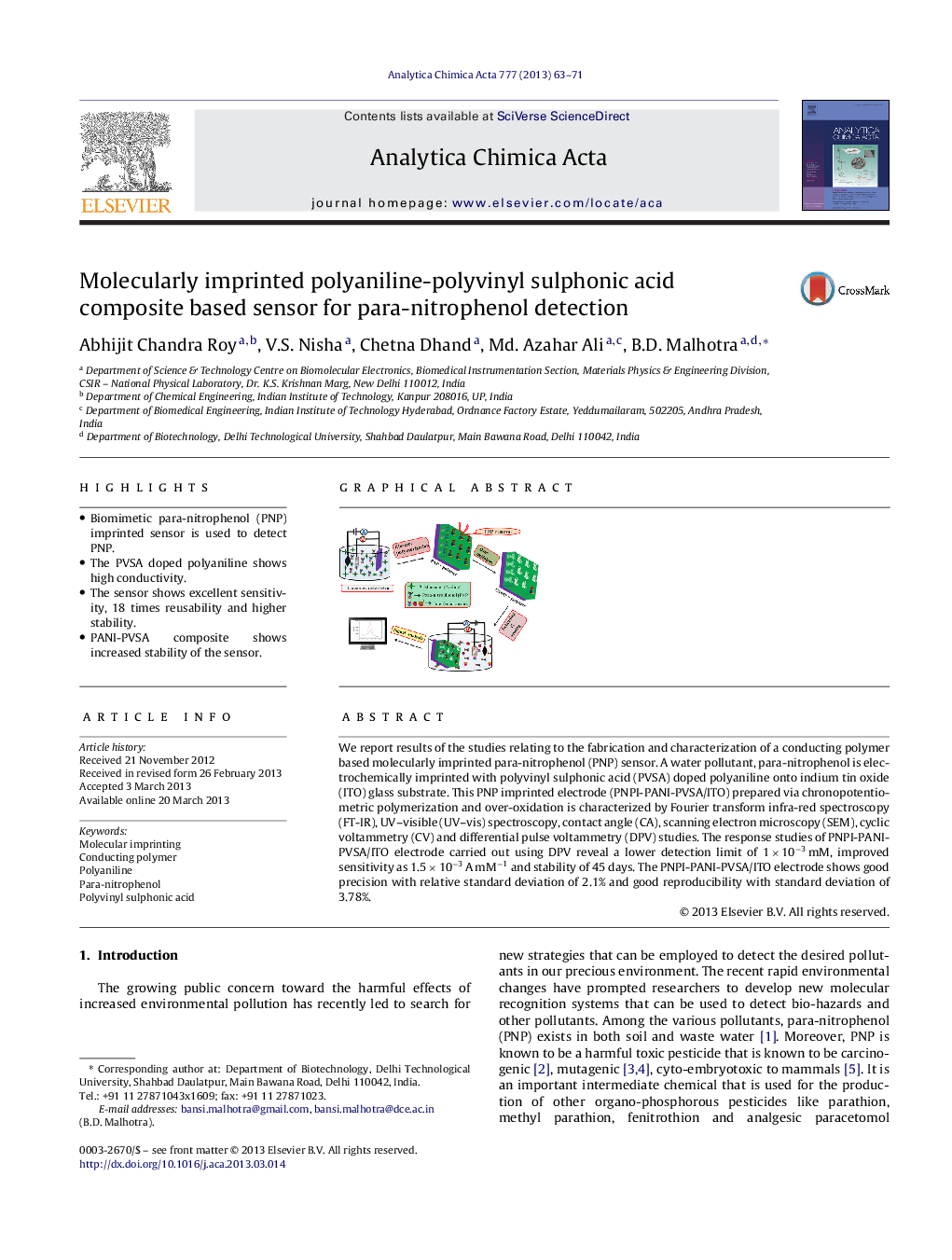| Article ID | Journal | Published Year | Pages | File Type |
|---|---|---|---|---|
| 1164828 | Analytica Chimica Acta | 2013 | 9 Pages |
•Biomimetic para-nitrophenol (PNP) imprinted sensor is used to detect PNP.•The PVSA doped polyaniline shows high conductivity.•The sensor shows excellent sensitivity, 18 times reusability and higher stability.•PANI-PVSA composite shows increased stability of the sensor.
We report results of the studies relating to the fabrication and characterization of a conducting polymer based molecularly imprinted para-nitrophenol (PNP) sensor. A water pollutant, para-nitrophenol is electrochemically imprinted with polyvinyl sulphonic acid (PVSA) doped polyaniline onto indium tin oxide (ITO) glass substrate. This PNP imprinted electrode (PNPI-PANI-PVSA/ITO) prepared via chronopotentiometric polymerization and over-oxidation is characterized by Fourier transform infra-red spectroscopy (FT-IR), UV–visible (UV–vis) spectroscopy, contact angle (CA), scanning electron microscopy (SEM), cyclic voltammetry (CV) and differential pulse voltammetry (DPV) studies. The response studies of PNPI-PANI-PVSA/ITO electrode carried out using DPV reveal a lower detection limit of 1 × 10−3 mM, improved sensitivity as 1.5 × 10−3 A mM−1 and stability of 45 days. The PNPI-PANI-PVSA/ITO electrode shows good precision with relative standard deviation of 2.1% and good reproducibility with standard deviation of 3.78%.
Graphical abstractFigure optionsDownload full-size imageDownload as PowerPoint slide
